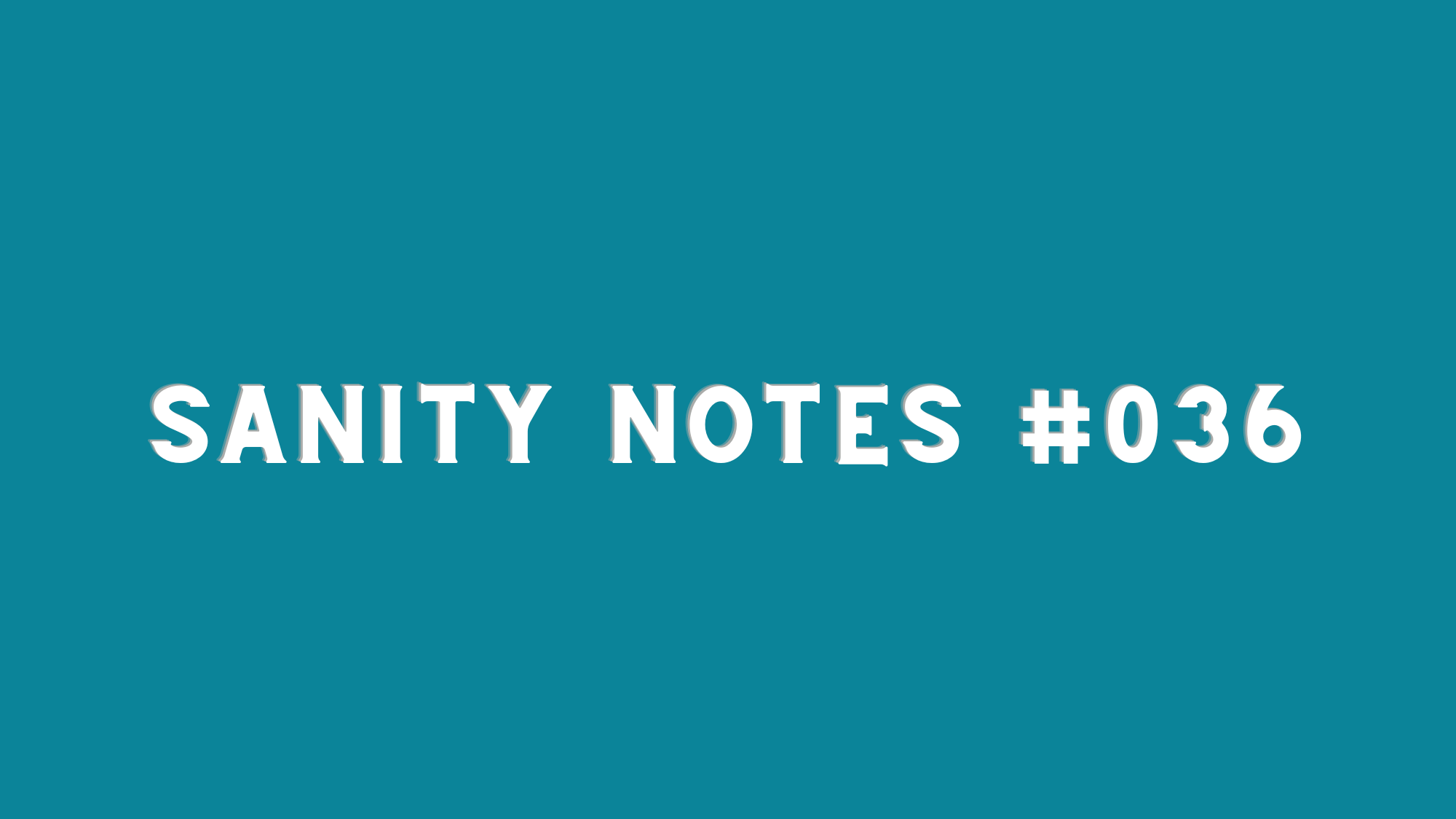The magic your meetings are missing
Leverage the power of check-ins to level-up meetings and bring your team closer

The most distracted CEO I know
Matt needs to shore up his communication patterns in 1:1s and in smaller group settings. Being able to refine and get a bit better in those smaller interactions will make a pretty distinct impact on the company. It is a combination of things that would be helpful (active listening, truly giving off the feeling of being receptive, and having the other person feeling heard or valued).
Wow, that makes me cringe to read. That quote is snipped from a 360 review of me, as CEO, in the summer of 2016. To be honest, I had forgotten receiving that feedback until I recently re-read that review.
Today, I make my living by coaching leaders. My central commitment in that work is to show up for conversations fully ready to listen intently and create a shared, trusted space. Thus, you can imagine, reading that portion of the review makes my skin crawl!
I feel guilt and sadness looking back on my failure to show up for my team members with the support and curiosity they needed.
It is a testament to the patience of my team, and to the skill and care of my coach at the time, that I learned over the ensuing years how to show up deeply present with my team even amidst the firefight of startup life.
If you are anything like me as a CEO or leader, you too may find it difficult to show up fully present in meetings. Part of the weight of being a leader for me was that my brain was always tracking numerous threats and opportunities at once. The superpower that helped me to see around corners as a strategist left me distracted with the people I was charged with supporting.
Running a company requires tremendous context switching. It can be difficult to show up present to discuss the upcoming app release when five minutes earlier you found yourself on the stressful end of a call with a board member.
Such challenging context switching is not isolated to CEOs or leaders. Every employee in the workplace today has their attention pulled: their cell phone is buzzing with a text from their family member, their Slack feed has 50 unattended messages, and someone just dropped by their desk before the meeting to make an urgent request that needs attention by the end of the day.
All to say, in any given meeting, it is unlikely the crew is showing up ready to focus. Yet focused, curiosity-driven discussion is the heart of any effective meeting.
Isn't the point of a meeting to get shit done?
In startup lore, meetings are treated far differently than the Mad Men era of our parents.
Meetings are for getting shit done. They are agenda driven. They are results oriented.
Meetings are not places for water-cooler talk.
Get in, get through the agenda, get out.
That is all fine and good. However, meetings are attended by humans. Effective meetings are composed of humans coming together to creatively solve challenging questions.
Humans are not good at being creative when they are distracted.
There is a psychological reason for this. Creativity and problem solving are powered by the prefrontal cortex region of our brain. When our system is stressed by that emergency our partner or coworker just dropped on our desk, we go into fight-or-flight mode and our prefrontal cortex goes 'offline.'
As a result, we show up for that meeting feeling anxious and worried but trying to get focused and put on a brave face. We try to dive right into the agenda, but our attention and emotions are elsewhere.
That is part of being human.
When I look back at my early years as CEO and my efforts to dive right in to the agenda, I can see I the negative results clearly.
I see distraction.
When we attempt to context shift in mere minutes with no transition, distraction is inevitable.
I see emotions driven by unspoken currents.
I wonder looking back how often my teammates read anxiety on my face and assumed the anxiety was about them when in fact I had carried the anxiety in from some unrelated conversation I had just finished.
I see a lack of support.
We were a team. Every day, we came in to the same office and worked together on the same mission. However, there must have been innumerable moments together where one of us was carrying an unspoken stress, trying to put on a brave face, and where the rest of us had no idea our team member was suffering.
I see a lack of closeness.
Finally, I can look back at those early years as a team and see that while we were friendly, real intimacy eluded us as a leadership team and as a company. We did not create space for it in the way we would learn to in the later years.
The practice I am going to share with you today will not transform your culture overnight, but it is one of the simplest and most powerful practices for increasing closeness and support and unlocking a level of focus and creativity of which most teams only dream.
The power of the check-in
Around the time I received that 360 feedback, we began to practice check-ins at our company. The impact was immediate.
Here is how they work.
At the beginning of the meeting, each person takes a turn 'checking in' as green, yellow, or red. The description or each is as follows:
- Green: I am here, focused, ready to go.
- Yellow: I am here, but something going on has me mildly distracted (or anxious, nervous, etc.)
- Red: I am physically here, but my mind or emotions are entirely elsewhere. (i.e. I have major stress about some health news, some work stress, a fight with my partner, etc.)
When checking in, each person is free to add narrative to their color check-in or not.
For example, someone might simply say "I'm green" or "I'm red."
Or, they might say "I'm green. Excited for this meeting and my morning has been great!" Or "I'm yellow. We are behind on shipping the new feature and I'm carrying some anxiety from that meeting earlier today."
When a team member checks in yellow or red, the facilitator (or any other team member) might ask "how can we support you?" The individual is welcome to share more or to ask for any support she might like. Or she can say that no support is needed.
I found for myself that sometimes simply sharing my color, even if I did not feel up for sharing more, was helpful for me to mentally and emotionally transition into the meeting space.
One final note on the 'how': we discovered after practicing check-ins for several months a move that was a game-changer for us as a leadership team. Whenever someone from the team checked-in as red, we would postpone the meeting. We would ask how we could support, if helpful we would use the time to support our team member, but we would generally not conduct the meeting. We learned it was much more effective to have meetings when each team member was available to be creative and focussed. It was not worth forcing.
If you prefer, you can check-in using colors or numbers or simply with short sentences. The magic is not in the structure, the magic is in developing the cultural practices of supported transition and of listening to one another as humans (not simply teammates).
Why check-ins work
By contrast to the distracted meetings my team was experiencing in those early years, we found as we practiced check-ins that we were offering ourselves space to transition.
I love the stoic practice of planning for the inevitable. In this case, rather than demanding of our team they show up for meetings focused and ready to work, we are planning that each of us are sometimes going to show up distracted or overwhelmed. We are human; it is going to happen. So we create space for the inevitable; we plan for it.
Checking in with one another also helped us as a team to practice really listening. When someone would check-in yellow or red, I found I could not help but be curious. Suddenly, I would lean in and wonder what was going on. The sharing of the other caused me to be more present. It brought my prefrontal cortex online as my curiosity was engaged.
In listening, we came to know one another better and to be better equipped to care for one another.
In the years before we began practicing check-ins, we found it easy to let weeks or months go by without knowing much of what was going on in the lives of our other team members. Checking in brought into the work day the experiences we were having as people outside the building. When someone's child was having an issue, we often knew about it. When someone had a rushed morning after a fight with their partner, there was space to share it if desired.
The sharing and listening brought us together.
As we came together, we learned to better support one another. When someone checked in yellow or read, we learned to ask "How can we support you?" Often all that was needed was to be heard. Other times, people would ask that the team simply be patient if they were a bit distracted in the meeting.
Sometimes, we moved the damn meeting.
High impact teams begin with trust. Trust begins with relationship.
For our team, checking in and holding space for whatever was going on in one another's life was one of the easiest and most powerful ways we discovered for creating a workplace where we really knew one another.
As a result, we saw happier team members, near zero attrition, and incredibly creative and productive work.
Check-ins were big.
We are too busy for this shit
Running a startup is overwhelming. The task lists and product backlogs seem to grow faster than we can check things off. I speak with many founders and CEOs who feel guilty if they take 5 minutes out of the day to walk around the block. I can remember, in my early years as a CEO, feeling guilty if I would leave my desk to use the bathroom. There was just so much to do. No time to waste.
So let's talk about wasting time. What actually wastes time?
When I sit in on a leadership team meeting as a coach, I see tons of time wasted. But it is not wasted with check-ins.
Time is wasted on team members talking at one another but not really listening.
Time is wasted on team members lost in their own thoughts or ruminating on something that happened an hour ago in the last meeting.
Time is wasted when someone is unable to think creatively about the problem at hand because they are still red from an argument they had with their partner that morning.
These things waste time.
If you do not have time to waste, you might try checking in.
Space and support help to create a present and focused team.
Presence if powerful, and focus is fast.
It's the people stupid
In my earliest days as CEO, I remember walking through the office one day thinking "wow I did not realize we would have to manage so many employees!" It sounds crazy in hindsight. Some part of me errantly believed that in starting an Internet business it was going to be about the product and our laptops not about people
I was wrong.
Do not follow my mistake. If you want to build a high-leverage, highly effective company that delights customers and supports scale, support your people first.
Check-ins might be a fun and easy place to start. Give it a try; I would love to hear how to goes.
Sending love along the journey.
Matt
Sanity Notes Newsletter
Join the newsletter to receive semi-weekly updates in your inbox.


